Since time immemorial, women have worn jewelry - earrings, necklaces, just ribbons or strips of fabric. Each tried to emphasize her individuality, show her artistic taste and skill, and sometimes indicate the material well-being of the family. The purpose of jewelry was different: to attract attention to herself, to create an additional effect of the costume, to protect against evil spells and forces.
I. Earrings.

1. Kolts (also - Koltko, Koltushi) - ancient Rus (XI - XIII centuries) women's jewelry: gold or silver cast pendants, which were attached with ribbons to the temporal part of women's headdresses, replaced earrings and, most often, in addition to decoration, also acted as a talisman. The design is simple: two plates, convex in shape, soldered together and in the upper part, attached to a bracket for hanging. They are found in the shape of a circle or a star. Images of intricate birds, sirens, flowers, the tree of life were applied to round jewelry using cloisonné enamel, and in later times - Christian motifs. Gold and silver kolts in the shape of stars decorated grain and scanty.

2. Belts - were used in the late Middle Ages (approximately from the 14th century). They are heavy massive pendants, fixed on a ring-shwenz, supplemented with bells on the lower edge. The pendants were either attached to the headdress with ribbons, or attached to the ear. In later times they began to be made of beads.
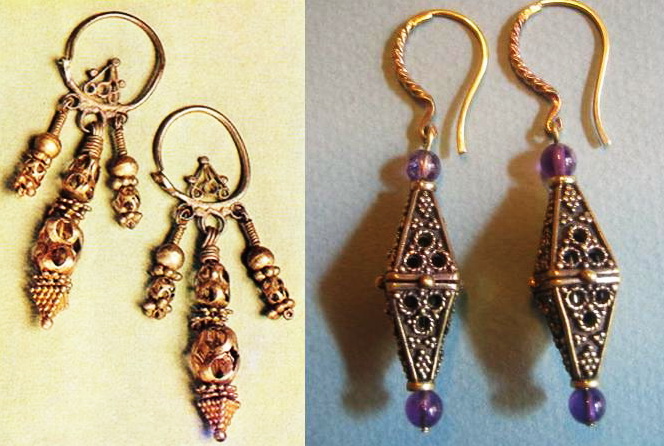
3. Odintsi, dvoychatki and treychatki - hanging long earrings with one, two or three rods (whence the corresponding name). Small bone, carnelian or mother-of-pearl balls or cylinders, river pearls or glass beads were attached to the rods. They were used in the Central and Northern regions of the European part of Rus, from about the 15th century.
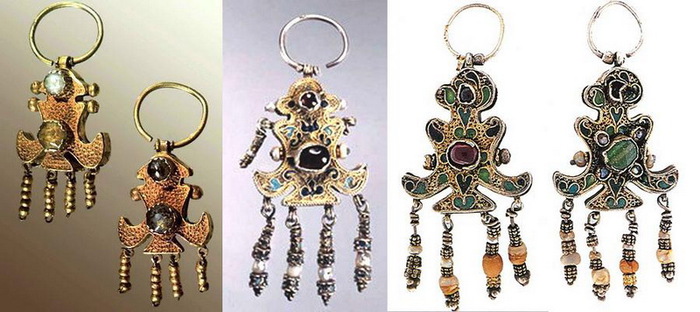
4. Doves (orliks) are heavy earrings, shaped like one or two birds with their backs turned to each other. They were used in the 16th - 17th centuries.
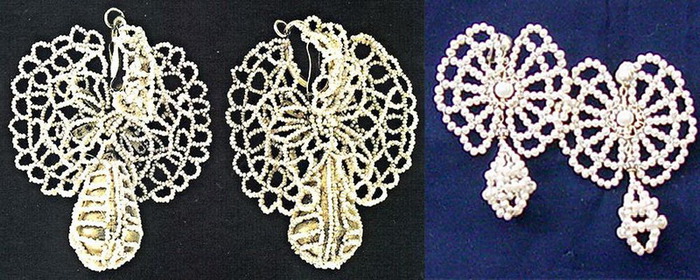
5. Butterflies - a two-lobed metal rod, braided with pearls in an openwork pattern resembling butterfly wings. Pearls were strung on a thin wire or horsehair and attached to the lower part of the pendant in the shape of a drop or bell. The base of the part was made of brass, an alloy of metals: zinc and copper, with the addition of other elements, the bracket was made of silver. The final shape of the earrings and the materials used were determined by the end of the 18th century, but in the 19th century. - natural pearls were replaced by glass beads and beads with a mother-of-pearl coating.
II. Beads and their types.
Neck ornaments occupied a significant place in folk costumes.
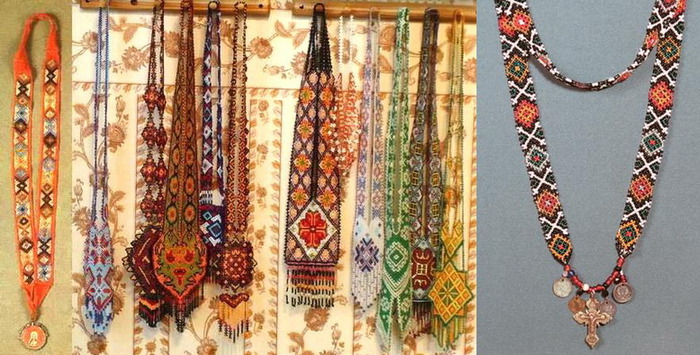
1. Gaitan (also - titan, gerdan, koroleska, itan, pochepka, chapochka, etc.) - primarily a chest ornament, in some cases it turns into a back ornament or is connected to it. Initially, it was made in the form of a strip-chain of metal rings woven together, a cross or icon attached to it served as a pendant. Later, folk craftsmen began to make such jewelry from threads or beads, which greatly simplified the work and reduced the cost of the jewelry. Nowadays, gaitans are long braided strips of beads (the longest length is to the waist), no more than 10 cm wide. Both ends of the beaded ribbon are connected by a pendant, which, in turn, is decorated with a beaded fringe or tassel, a medallion. In ancient times, in order to give the heytan a special protective meaning, a chicken wing bone - a vastavaranka - was attached to it along with a pendant.

2. A necklace - similar to a necklace, only the beaded threads or chains are divided into equal segments by elements that, in shape and appearance, resemble a main medallion. It can be closed with a large pendant - a medallion, or it can remain unlocked.

3. Kolodochki or harness - a tightly woven voluminous ring of beads or chain, very similar to the body of a snake. Most often used by young women and girls in the Tula, Ryazan and Kaluga provinces. Lariat - also a tight voluminous beaded harness, only longer. Used as a belt or as a necklace. For unknown reasons, they are often confused with necklaces.
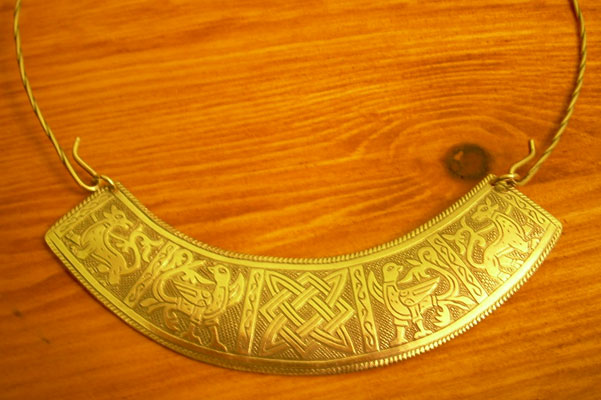
4. Hryvnia - an ancient, known since the times of Kievan Rus, women's neck jewelry: a ring with a wide gold or silver plate insert. The plate was decorated with ornaments, notches or exquisite carvings. The jewelry most often did not have a clasp, but was fastened directly to the neck.

5. Pearls (also - twigs, rods) - an ornament made of river pearls strung on horsehair. It was used to decorate clothes and hats, make beads and earrings, traditional techniques for using it to decorate folk costumes existed until the beginning of the 20th century. Pearls were mined in rivers in northern Europe. They are formed in river shells, which are called "freshwater pearl" or in Latin - "margaritana margaritifera". The shells have a kidney-shaped shape, the sizes of pearls vary from small grains to balls with a diameter of 10 to 14 mm. On holidays in some areas of the Voronezh province, the rods consisted of several threads, and on especially large and important ones - their number reached ten.
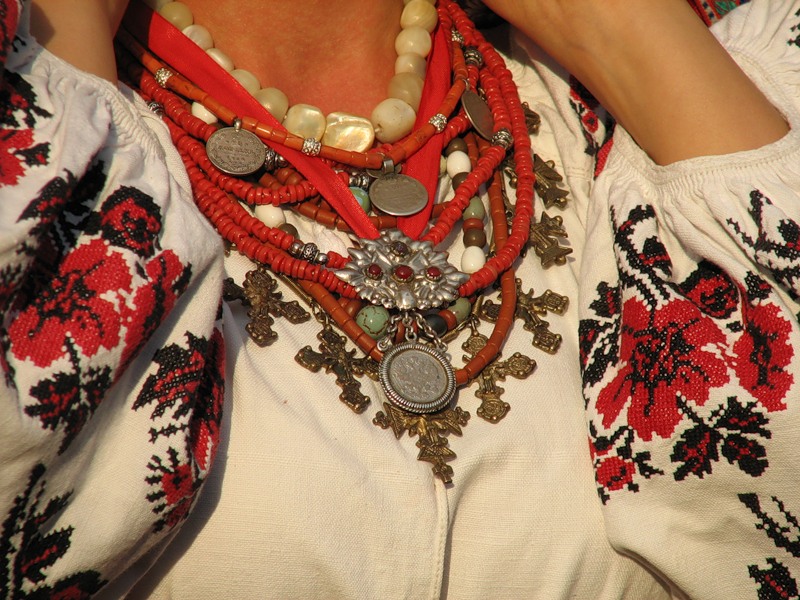
6. Monisto (also - manisty, necklace) - a decoration made of several interconnected threads, to which in rare cases small coins - pendants were attached.

7. Alenka (also - a necklace, a brode, a neckband, a neckband, etc.) is a skillfully embroidered and richly decorated strip of fabric worn around the neck. The lower edge was decorated with folded ribbons, tassels or fringe, beads, beads or glass beads.

8. Naburushnik (also glunet, opelich) - a round neck ornament, the front side of which is richly decorated with silver or gold embroidery, exquisite national embroidery, lace, pearls, beads or applique made of colored foil.

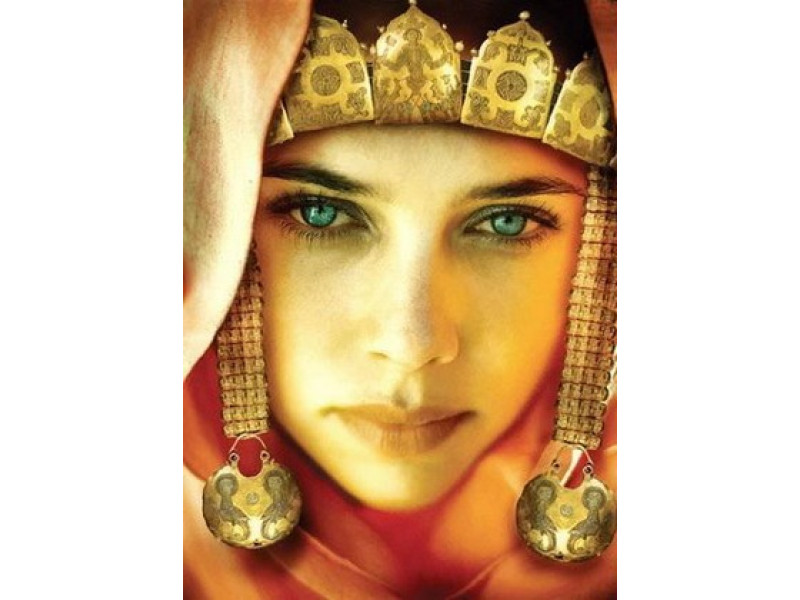
Write a comment